The Western Wall, also known in Hebrew as the Kotel or sometimes called the “Wailing Wall”, is a significant historical and religious site located in Jerusalem, Israel. As it is located on the holiest site in Judaism, it is considered sacred to Jews due to it being the last remaining wall of the Holy Temple, which G-d has sworn will never fall. There have been numerous attempts to destroy it but it still stands proud. Everyone (with peaceful intentions) is welcome at the Kotel but out of respect the Torah laws of modesty should be followed.
Steps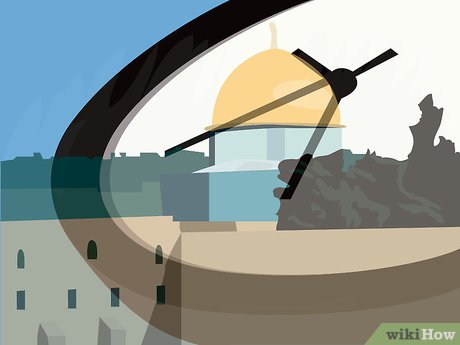
1Time your visit properly. While the Wall itself is open 24/7, if you want to avoid large crowds, the best time to visit the Western Wall is on a weekday, either earlier in the morning or later at night, and also on days that are not major Jewish/Israeli holidays. In addition, keep in mind that the Wall will be more crowded than usual on Monday and Thursday mornings for Bar Mitzvah reading celebrations which are frequent, as well as Friday nights and Saturdays which is the Jewish Sabbath.You will also find the Wall virtually deserted during periods of inclement weather, such as heavy rain or snow. While it may be uncomfortable being outside at these times, it can also be a blessing for the undeterred tourist as there will be few people about, and you will have greater privacy if desired.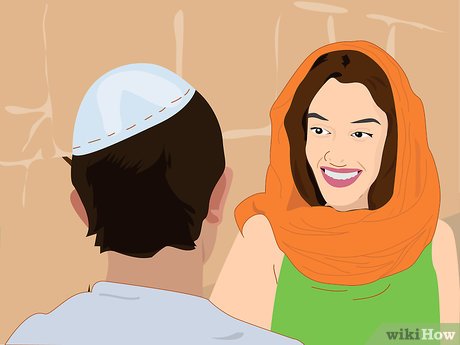
2Dress considerately. While there is no official dress code, remember that you are visiting a religious site, so your clothes should be generally modest in nature at the very least. Jewish men should wear a yarmulke (kippa) head covering at the Wall, and women should dress in a manner which does not reveal more than the neck, hands until the elbow and face. Jewish women who are or have been married should cover their hair.
3Go to the Dung Gate, close to the Temple Mount complex near the southeast corner of the Old City of Jerusalem. The Dung Gate can be accessed by car, bus, or foot and is the most practical way to get to the Wall. Some other methods are as follows:Buses #1, #3, and #38 have stops near the entrance to the Wall.Take a taxi to the Dung Gate.Car parking is available for an hourly rate at the Old City entrance near Jaffa Gate, then walk to the Dung Gate.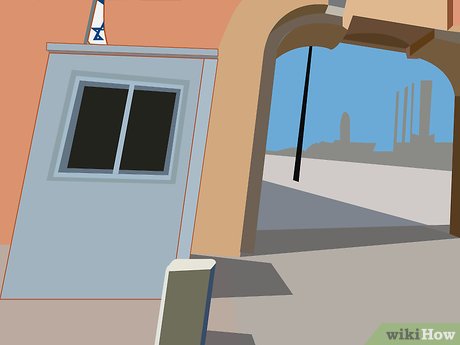
4Proceed through the airport-style security checkpoint. This is simply to ensure your safety, and should only take a few minutes with your full compliance.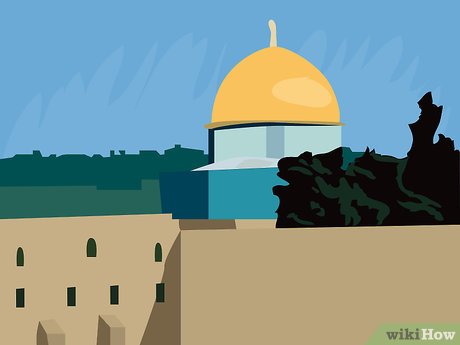
5Walk across the large, open plaza to approach the Wall. This area is typically filled with tourists and worshipers alike, and is a great place to take dramatic photos looking toward the Wall.Be prepared for the mechitza (barrier) which divides men and women into two separate sides for prayer: women on the right and men on the left.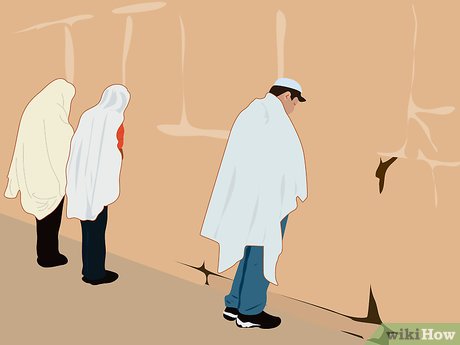
6Step up to the Wall. Here, you can say a prayer, contemplate, or simply admire the massive ancient stonework.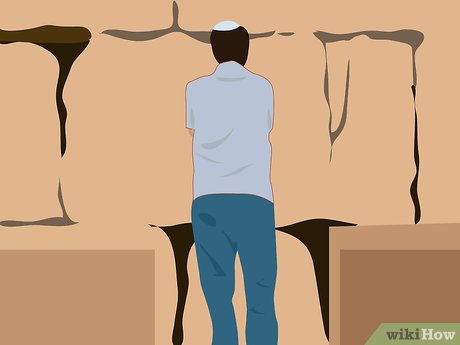
7Insert a handwritten note into one of the many cracks along the Wall. This step is optional, but it is a time-honored tradition to place a note with a prayer or personal message into the Wall, and many famous people and foreign dignitaries have done this themselves.
8Step back toward the plaza after a reasonable amount of time to let others approach the Wall. You can then feel free to spend time taking pictures, sitting in one of the plastic chairs to watch the crowds, etc.








